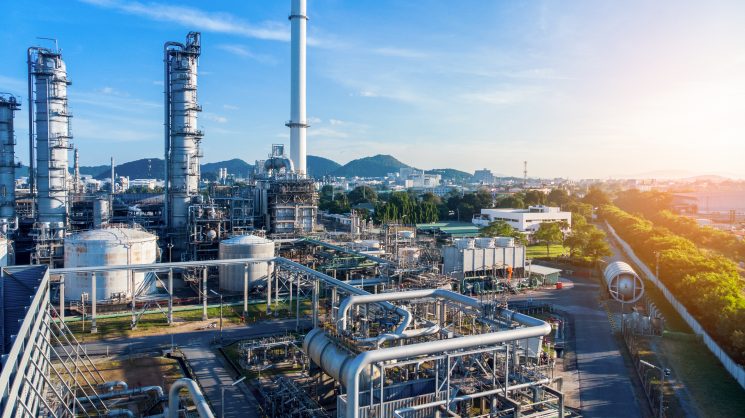Whether you’re managing a chemical plant, nuclear plant, refinery, power plant, or a transport and loading facility, you should aim for the highest levels of optimum productivity. Because of heavy machinery, complex devices, repetitive tasks, and other manufacturing equipment and processes, every plant would need a stable operation. Plant managers clearly understand that even minor delays and setbacks can result in costly consequences. For this reason, sound planning is crucial for a successful plant operation.
In this article, you’ll learn the essential things all plant operations need to attain a smoother workflow and meet output targets every time.
1. Good Plant Layout
A vital aspect of factory management is a good plant layout. It directly affects your operational efficiency, including administration, production, inventory, and dispatch. Choose a lean layout over a process-based, traditional layout to gain more benefits for your company.
A poor plant layout may lead to accidents, low productivity levels, and unmet goals. On the other hand, there are many good reasons to improve your plant layout, such as the following:
- Creating a seamless information and material flow
- Minimize handling time and effort
- Save on floor space
- Shorten customer lead times
- Increase quality and productivity
- More efficient and flexible use of space
2. Flexible Generation Source
In industrialized countries, generating facilities provide electricity, serving a large number of customers. They are called central station generators, located in remote areas. For power plants, the central station generation economics is an essential matter of cost. The cost can be either fixed or variable. The operating costs include fuel, maintenance, and labor costs.
The total operating cost of a power plant highly depends on the electricity it produces. Fossil-fired plants have fuel costs dominating the total operational cost. For those plants using renewable energy sources, fuel is free. On the other hand, nuclear power plants have very low fuel costs. Choosing a flexible generation source will help you cut down your operational cost significantly.
Here are the different energy generation sources and their operating costs per kilowatt-hour:
- Coal-fired Combustion Turbine: £ 0.015 to 0.029
- Natural Gas Combustion Turbine: £ 0.029 to 0.073
- Coal Gasification Combined-Cycle or IGCC: £ 0.029 to 0.058
- Natural Gas Combined-Cycle: £ 0.029 to 0.073
- Wind Turbine: Less than £ 0.0073
- Nuclear: £ 0.015 to 0.037
- Photovoltaic Solar: Less than £ 0.0073
- Hydroelectric: Less than £ 0.0073
3. Operations And Maintenance Joint Venture

Operations and maintenance in plants are partners in a joint venture to develop improved processes and highly reliable production. It’s crucial to have the same goal: to improve overall production efficiency and reliability to lower maintenance costs. Also, when solving problems, take it as a team and not categorize losses by department.
A close collaboration between your production and maintenance is essential to attaining high productivity levels in the plant. If everyone knows what to do and expect, then the plant achieves its target goals.
Take a look at the other things you can do to improve plant operations and maintenance:
- Include plant operators in essential care and basic inspection of equipment. In this way, they would take greater responsibility in ensuring that the equipment is working in good condition at all times.
- Agree on a set guideline for prioritizing work requests. By doing so, it will prevent order delays and help meet deadlines.
- Communicate production plans properly, using different modes, such as verbal and work board announcements.
- Create a mutual shutdown schedule to avoid major production disruption.
4. Safety And Risk Management Guidelines
Plant safety is critical. The operation of plants requires a high safety level to avoid endangering residents and employees’ health and threatening the environment. Hiring occupational healthcare workers is important to ensure that your plant is equipped with the right people to help handle emergencies as they arise. In this way, workplace injuries can be addressed promptly.
Reduce and manage risks by using specialized risk management tools to determine weak points systematically. Also, it creates a good foundation for installation and operational plant management in compliance with legal requirements and government regulations. In Edmonton, as in many other places, there are various organizations and institutions that offer safety and risk management training as well as first aid training. Both Edmonton First Aid training and safety and risk management are critical aspects of ensuring the well-being of individuals and maintaining a safe environment.
Check the following components of a good safety and risk management guideline:
- Safety management systems
- Safety-related inspections
- Dispersion calculations
- Risk analyses using recognized methods
- Explosion protection documents
- Damage investigations
- Emergency plans
- Safety reports
- Disaster prevention
Conclusion
Plants are some of the busiest companies in the world. All plants need a good layout for seamless workflow and a flexible energy source to reduce operations costs. Plants must set safety and risk management guidelines to avoid negative impacts on health, safety, and the environment. Also, every plant should have high production levels, which can be accomplished by a good collaboration of the maintenance and operations department.





